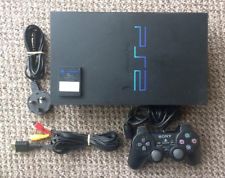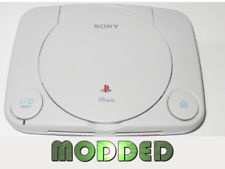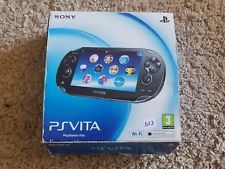|
May 10th, 2010, 16:10 Posted By: Pegasus2000
As you know, Blind Assistant is a software aiming to help visually impaired people through
a set of technologies like voice recognition, voice synthesis, algorithms for artificial vision,
all running in a single homebrew.
The application, developed at Visilab Research Center of the University of Messina, doesn't
require a complex and expensive hardware to work, but it can be executed on a simple
PSP-2000 with 64 Mb of ram.
The last Blind Assistant CFW0005, released a year ago, surprised the world for its great
complexity. In the meantime, Visilab was working on the weak points of the software
in order to make it more reliable and powerful.
The result is Blind Assistant CFW0006: probably the most complex homebrew ever
released. You can download the homebrew here:
http://visilab.unime.it/~filippo/Bli...dAssistant.htm
We have created some videos about what Blind Assistant can actually do:
At the actual stage, Blind Assistant provides seven functionalities:
1) Voice clock and calendar Pressing the START key, the blind can obtain the
date and the time by the console
2) Face recognition The system uses the PentLand Component Analysis (PCA),
algorithm, speeded up by the use of Sony VFPU, for recognizing the names and the position
of the people that are present in that moment in the room. In this release, it has
been implemented a new memory manager that manages dinamically the available
ram, allowing to obtain better performances.
3) Position recognition Using the SIFT (Scalar Image Feature Transform) algorithm,
Blind Assistant is able to recognize the room where the blind is. As the SIFT algorithm
is too computationally expensive for the small processor of PSP, the image is sent via
wi-fi to a server, called BlindServer, that runs on a x86 PC. The SIFT analysis is done inside
the server and the answer is returned via wi-fi. In this new version of Blind Assistant,
the client tries to connect to the server everytime it is necessary, and not only at
startup like in the previous releases.
4) Optical char recognition Blind Assistant is able to read a text in a frame grabbed
by the camera. For this new release, a new technology has been implemented: ndTesseract
(it replaces the old ndOcrad engine for the internal scanning method).
ndTesseract is a version of the OCR originally developed by Google, that is able to run,
for the first time in the world, on the small MIPS processor of the Sony console. The result is
of extra-ordinary importance, because Tesseract is actually the OCR, among the open-
source solutions, that provides the best recognition rate. The execution of a complex
software like Tesseract inside an homebrew has been made possible using the
Varangozov memory manager, a new technology that will be released in the next
Nanodesktop 0.5 and that will make the nd applications up to three times faster than
now.
5) Data matrix scanner Blind Assistant is able to recognize the data matrix labels,
compatible with standard ISO/IEC 16022:2006 (http://en.wikipedia.org/wiki/Data_matrix_(computer)).
This new functionality is very important, because the data matrix labels
can be used for object recognition, collision avoidance, for reading the content of
different boxes, for reading the labels of the drugs etc. The scanner operates at a
frequency of 1 Hz and it is able to recognize the labels independently from rotations,
scaling or variation in pose. The content is read to the blind through the integrated
voice synthesizer
6) Mail reader. Blind Assistant integrates a small mail reader. Thanks to the
introduction of the ndVMIME library, the software is able to manage both HTML or
plain text mails now. Furthermore, during the other operations of the system,
a daemon is run in background: it checks, every nn minutes, if new mails have
arrived. In this case, a voice advice is emitted and the blind is invited to read the
new messages that have arrived.
7) Fixer tools When Blind Assistant encounters some error conditions, like errors
in the database stored in the memory stick, it executes automatically some routines that
fix the problem without any necessity of operations by the user.
Blind Assistant requires a PSP-2000 and a Sony GoCam camera. A reduced version of the
software for PSP-1000 users (sharing the same source code, but with many functionalities
disabled) is provided too. At startup Blind Assistant Loader shall select automatically the
core that is right for your platform.
The users of the old Blind Assistant CFW0005 can update their application via internet
using the automatic update feature.
I want to remember you, in fact, that Blind Assistant is
able to auto-update itself with the new versions released by Visilab.
I hope that this tool can be useful, and that the staff can dedicate a "news in home" for this notice.
Thanks in advance
Filippo Battaglia
For more information and downloads, click here!
 There are 1 comments - Join In and Discuss Here There are 1 comments - Join In and Discuss Here
|
|





